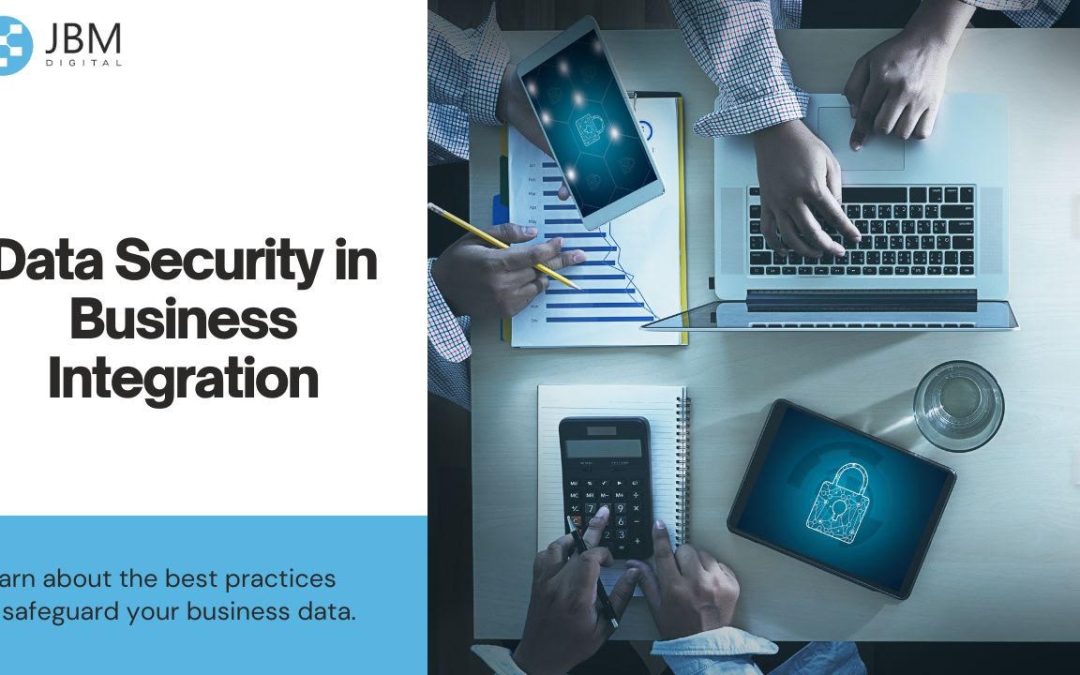
by JBM Digital | May 14, 2024 | SEO optimization/elevate your online presence

Photo bygeralt onPixabay
Introduction to SEO for Small Businesses
In the digital age, having a strong online presence is crucial for the success of small businesses. Search Engine Optimisation (SEO) plays a vital role in ensuring your business is easily discoverable by potential customers searching for your products or services. This comprehensive guide will walk you through the essential steps to boost online visibility and drive more traffic to your small business website.

Image source: Pexels
Why SEO is Important for Small Businesses
Small businesses often face fierce competition in their local and regional markets. SEO allows you to level the playing field by improving your website’s ranking in search engine results pages (SERPs), making it more likely for your target audience to find and engage with your business.

Image source: iStock
By optimizing your online presence, you can attract more qualified leads, increase brand awareness, and ultimately, drive sales and revenue growth.
Understanding the Basics of Search Engine Optimization
At its core, SEO is enhancing your website’s content, structure, and technical aspects to improve its visibility and relevance in search engine results. This involves understanding how search engines like Google, Bing, and Yahoo work, and then strategically implementing a range of tactics to ensure your target audience easily finds your website.

Image source: Pexels
Conducting Keyword Research for Your Small Business
Identifying the right keywords is the foundation of any effective SEO strategy. Start by understanding the search queries and terms your potential customers are using to find businesses like yours.
Conduct in-depth keyword research to uncover the most relevant and high-performing keywords, and then incorporate them seamlessly into your website’s content and metadata.
On-Page Optimization Techniques for Better Search Rankings
On-page SEO refers to the optimization of individual web pages to improve their search engine visibility and ranking. This includes optimizing your page titles, meta descriptions, headings, content, images, and other elements to ensure they are aligned with your target keywords and provide a positive user experience.
Off-Page Optimization Strategies to Boost Your Online Presence
While on-page SEO is crucial, off-page optimization strategies are equally important. These include building high-quality backlinks, engaging in social media marketing, and leveraging other off-site factors that can positively influence your website’s authority and trustworthiness in the eyes of search engines.
Optimizing Your Website’s Technical Aspects for Improved SEO
Technical SEO involves optimizing the underlying structure and code of your website to ensure it is easily crawled and indexed by search engines. This includes optimizing your website’s speed, mobile-friendliness, security, and other technical factors that can impact your search engine rankings.
Local SEO for Small Businesses Targeting a Specific Geographic Area
If your small business serves a local or regional market, leveraging local SEO strategies is crucial. This includes optimizing your Google My Business listing, creating location-specific content, and building citations (online mentions of your business) in local directories and directories.
Measuring and Tracking Your SEO Progress
Effective SEO is an ongoing process that requires continuous monitoring and refinement. Implement robust analytics and tracking tools to measure the performance of your SEO efforts, identify areas for improvement, and make data-driven decisions to enhance your online visibility and drive better results.

Image source: Pexels
Common SEO Mistakes to Avoid for Small Businesses
While implementing SEO best practices can be highly beneficial, it’s also important to be aware of common SEO pitfalls that small businesses should avoid. These include keyword stuffing, duplicate content, slow website speed, and neglecting mobile optimisation, among others.
Conclusion: Taking Action and Implementing SEO Strategies for Your Small Business
In today’s digital landscape, a strong online presence is essential for the growth and success of small businesses. By following the steps outlined in this guide, you can develop and implement an effective SEO strategy that will help you boost your visibility, attract more qualified leads, and ultimately, drive more sales and revenue for your small business.

Image source: Pexels
If you’re ready to take your small business’s online presence to the next level, consider hiring JBM Digital to optimize your website and implement a comprehensive SEO strategy. Our team of experts has the knowledge and experience to help you rank higher in search engine results, attract more customers, and grow your business.
Contact us today to learn more about our SEO services and how we can help you succeed online.

by JBM Digital | Mar 28, 2024 | SEO optimization/elevate your online presence, Uncategorized

Image Source: FreeImages
Introduction to hosting security
In today’s digital age, where business operations rely heavily on the internet, ensuring the security of your hosting environment has become more crucial than ever. From protecting sensitive customer data to safeguarding your company’s reputation, hosting security plays a vital role in fortifying your business against potential threats. This comprehensive guide will walk you through the essential aspects of hosting security and equip you with the knowledge to make informed decisions to protect your business.
Why hosting security is essential for businesses
Hosting security is paramount for businesses due to the increasing number and sophistication of cyber threats. Hackers and malicious actors are constantly evolving their tactics to exploit vulnerabilities in hosting environments, aiming to infiltrate systems, steal data, or disrupt operations.

The consequences of a security breach can be devastating, leading to financial losses, legal repercussions, and irreparable damage to your brand’s reputation. By prioritizing hosting security, businesses can mitigate these risks and ensure the integrity and confidentiality of their digital assets.
Common hosting security threats
Understanding the common hosting security threats is the first step towards fortifying your business. One of the most prevalent threats is DDoS (Distributed Denial of Service) attacks, where an overwhelming amount of traffic floods your server, rendering it inaccessible. Another significant threat is malware, which can infect your hosting environment and compromise the confidentiality and integrity of your data. Phishing attacks, brute force attacks, and SQL injections are additional threats that businesses need to be aware of. By familiarizing yourself with these threats, you can implement appropriate measures to safeguard your hosting environment.
Understanding different types of hosting options
Before delving deeper into hosting security, it is important to understand the different types of hosting options available. Shared hosting, where multiple websites share resources on a single server, is a cost-effective option but may pose security risks due to the shared nature of resources. Virtual Private Servers (VPS) offer a higher level of security by isolating websites on separate virtual machines. Dedicated hosting provides the highest level of security as it allows you to have exclusive control over the entire server. By assessing your business needs and considering the trade-offs, you can choose a hosting option that balances security and affordability.
Best practices for securing your hosting environment
Securing your hosting environment requires implementing a combination of best practices. Firstly, ensure that your hosting provider has robust security measures in place, such as firewalls, intrusion detection systems, and regular security audits. It is also crucial to implement SSL (Secure Sockets Layer) certificates to enable secure data transmission between your website and users. Regularly updating and patching your hosting software is another fundamental practice that prevents vulnerabilities from being exploited. Additionally, monitoring and analyzing your hosting security through security logs and analytics tools enables you to identify and respond to potential threats promptly.
Choosing the right hosting provider with strong security measures
Selecting a reliable hosting provider with strong security measures is paramount for the safety of your business. Look for providers that offer advanced security features like DDoS protection, malware scanning, and regular backups. Research their reputation and track record in terms of uptime and responsiveness to security incidents. Consider their customer support services and ensure they provide timely assistance in case of security emergencies. By partnering with a reputable hosting provider, you can leverage their expertise and infrastructure to fortify your business’s hosting security.
Implementing SSL certificates for secure data transmission
SSL certificates play a crucial role in securing the transmission of data between your website and users. By encrypting the data exchanged, SSL certificates prevent eavesdropping and tampering, ensuring the confidentiality and integrity of sensitive information such as login credentials, payment details, and personal data. Implementing SSL certificates is relatively straightforward, and many hosting providers offer them as part of their services. By enabling HTTPS for your website, you not only protect your users but also gain their trust, which is invaluable for your business’s reputation.
Regularly updating and patching your hosting software
Regularly updating and patching your hosting software is a critical practice in maintaining a secure hosting environment. Software vulnerabilities are often discovered by hackers, and if left unpatched, they can be exploited to gain unauthorized access to your systems. Hosting providers typically release updates and patches to address these vulnerabilities.

Image source : Pexel
By staying proactive and applying these updates promptly, you can significantly reduce the risk of security breaches. Automating the update process whenever possible ensures that you stay up-to-date with the latest security enhancements without requiring manual intervention.
Monitoring and analyzing your hosting security
Monitoring and analyzing your hosting security is crucial to identify and respond to potential threats. By leveraging security logs and analytics tools, you can gain insights into suspicious activities, unauthorized access attempts, or unusual traffic patterns. Continuous monitoring allows you to detect and mitigate security incidents in real-time, minimizing the potential impact on your business. It is recommended to set up alerts and notifications for critical security events, enabling you to take immediate action. Regularly reviewing security logs and conducting periodic security audits further strengthens your hosting security posture.
The role of backups in hosting security
Data backups are an integral part of hosting security. In the event of a security breach, system failure, or accidental deletion, backups ensure that you can restore your website and data to a previous state. It is essential to have a robust backup strategy that includes both regular automated backups and manual backups before making significant changes to your hosting environment.

Image source : Pexel
Verify the integrity and accessibility of your backups periodically to ensure their effectiveness. By having reliable backups, you can minimize downtime, recover quickly from incidents, and maintain business continuity.
Training employees on hosting security best practices
While technological measures are vital, human error remains a significant factor in hosting security incidents. Training your employees on hosting security best practices is essential to create a security-conscious culture within your organization.

Image source : Pexel
Educate them on the importance of strong passwords, the risks of phishing attacks, and how to identify and report security incidents. Regularly conduct security awareness programs and provide ongoing training to keep your employees informed about the latest threats and mitigation strategies. By empowering your employees, you can establish a strong line of defense against hosting security threats.
Evaluating and improving your hosting security strategy
Hosting security is an ongoing process that requires regular evaluation and improvement. Assess the effectiveness of your security measures periodically and identify areas for enhancement. Stay informed about the latest security trends and emerging threats to ensure your defenses remain up-to-date. Conduct vulnerability assessments and penetration testing to identify any weaknesses in your hosting environment. Engage with your hosting provider to discuss any concerns or additional security options they may offer. By continuously evaluating and improving your hosting security strategy, you can stay one step ahead of potential threats.
Conclusion
In an increasingly interconnected world, hosting security is a critical aspect of safeguarding your business. By understanding the common threats, implementing best practices, and partnering with a reliable hosting provider, you can fortify your business against potential security breaches. Remember to prioritize regular updates and patching, monitor and analyze your hosting security, and train your employees on security best practices. With a robust hosting security strategy in place, you can focus on growing your business with confidence. Contact JBM Digital today to ensure your website’s security and protect your business from cyber threats.

by JBM Digital | Jan 22, 2024 | Data in business optimization & automation

Image Source: FreeImages
In today’s digital age, data security has become a top priority for businesses across industries. With the increasing integration of systems and processes, it is crucial to understand the importance of data security in business integration and implement best practices to protect sensitive information. This article will explore common data security threats in business integration and provide actionable tips and strategies to ensure the safety of your data.
Understanding Data Security in Business Integration
Before delving into the best practices for data security in business integration, it is essential to have a clear understanding of what data security entails in this context. Business integration refers to combining different systems, applications, and data sources to streamline operations and enhance efficiency. However, this integration also brings along various security risks that need to be addressed.
Data security in business integration involves safeguarding data confidentiality, integrity, and availability throughout the integration process. It encompasses protecting data from unauthorized access, ensuring data accuracy and consistency, and guaranteeing data availability when needed. By implementing robust data security measures, businesses can mitigate risks and protect their valuable information.
The Importance of Data Security in Business Integration
Data security is of paramount importance in business integration due to several reasons. Firstly, businesses deal with a vast amount of sensitive and confidential information, including customer data, financial records, and proprietary information. Any breach of this data can have severe consequences, including financial loss, reputational damage, and legal implications.
Secondly, business integration often involves the exchange of data with external partners, suppliers, and customers. This sharing of data increases the risk of unauthorized access and data leakage. By prioritizing data security, businesses can ensure the trust and confidence of their stakeholders, enhancing their reputation and fostering strong relationships.
Lastly, compliance with data protection regulations is crucial for businesses operating in today’s regulatory landscape. Non-compliance can result in hefty fines and penalties. By implementing rigorous data security practices, businesses can meet regulatory requirements and demonstrate their commitment to protecting sensitive information.
Common Data Security Threats in Business Integration
As businesses integrate their systems and processes, they become susceptible to various data security threats. It is vital to be aware of these threats to mitigate them effectively. Here are some common data security threats in business integration:
1. Unauthorized Access

Photo by Mati Mango from Pexels
Unauthorized access refers to the breach of data by individuals who do not have the necessary permissions or credentials. This can occur due to weak authentication mechanisms, compromised user accounts, or inadequate access controls. Unauthorized access can result in data theft, manipulation, or destruction.
2. Data Leakage
Data leakage is the unauthorized release of confidential or sensitive data to an external party. This can happen through accidental exposure, intentional data breaches, or insider threats. Data leakage can have severe consequences, including financial loss, reputational damage, and regulatory non-compliance.
3. Malware and Cyber Attacks
Malware and cyber attacks pose a significant threat to data security in business integration. Malicious software, such as viruses, ransomware, and trojans, can infiltrate systems and compromise data integrity and confidentiality. Cyber attacks, including phishing, social engineering, and DDoS attacks, can exploit vulnerabilities and gain unauthorized access to sensitive information.
Best Practices for Ensuring Data Security in Business Integration
To safeguard your data during the business integration process, it is crucial to implement best practices for data security. These practices will help mitigate risks and ensure the safety of your information. Here are some key best practices to consider:
1. Implementing Secure Data Transfer Protocols
One of the fundamental aspects of data security in business integration is secure data transfer. Implementing secure protocols, such as HTTPS, SFTP, or FTPS, ensures that data is encrypted during transit and protected from interception or tampering. It is also important to regularly update and patch these protocols to address any vulnerabilities.
2. Role-Based Access Control and Data Security
Role-based access control (RBAC) is an effective strategy for ensuring data security in business integration. By assigning specific roles and permissions to users, businesses can control access to sensitive data and prevent unauthorized access. Implementing RBAC helps enforce the principle of least privilege and minimizes the risk of data breaches.
3. Regular Data Security Audits and Assessments
Regular data security audits and assessments are essential to identify vulnerabilities and weaknesses in your business integration processes. Conducting these audits allows you to evaluate the effectiveness of your data security measures and implement necessary improvements. It is recommended to engage third-party auditors or security experts to provide an unbiased assessment.
4. Encryption and Data Masking
Encryption is a powerful technique to protect sensitive data in business integration. By encrypting data at rest and in transit, businesses can ensure that even if it falls into the wrong hands, it remains unreadable and unusable. Additionally, data masking techniques can be employed to replace sensitive data with fictitious or obfuscated values, further protecting the confidentiality of information.
5. Data Breach Response and Incident Management
Despite the best preventive measures, data breaches can still occur. It is crucial to have a robust data breach response and incident management plan in place. This plan should outline the steps to be taken in the event of a data breach, including containment, investigation, notification, and recovery. Regularly testing and updating this plan will ensure an effective response in case of a security incident.
Conclusion: Taking Proactive Measures for Data Security in Business Integration
In conclusion, data security is a critical aspect of business integration that should not be overlooked. By understanding the importance of data security, identifying common threats, and implementing best practices, businesses can protect their valuable information and maintain the trust of their stakeholders. Taking proactive measures, such as implementing secure data transfer protocols, role-based access control, regular audits, encryption, and incident management, will ensure the safety of your data throughout the integration process. Remember, data security is an ongoing effort that requires continuous evaluation and improvement to stay ahead of evolving threats. By prioritizing data security, businesses can mitigate risks and thrive in today’s interconnected world.
CTA: Contact us today to optimize your business and improve your business’s efficiency.
















Recent Comments